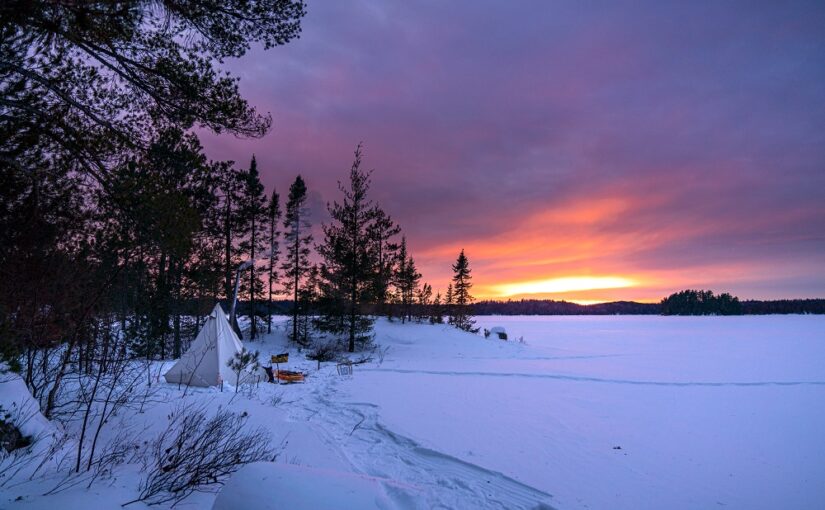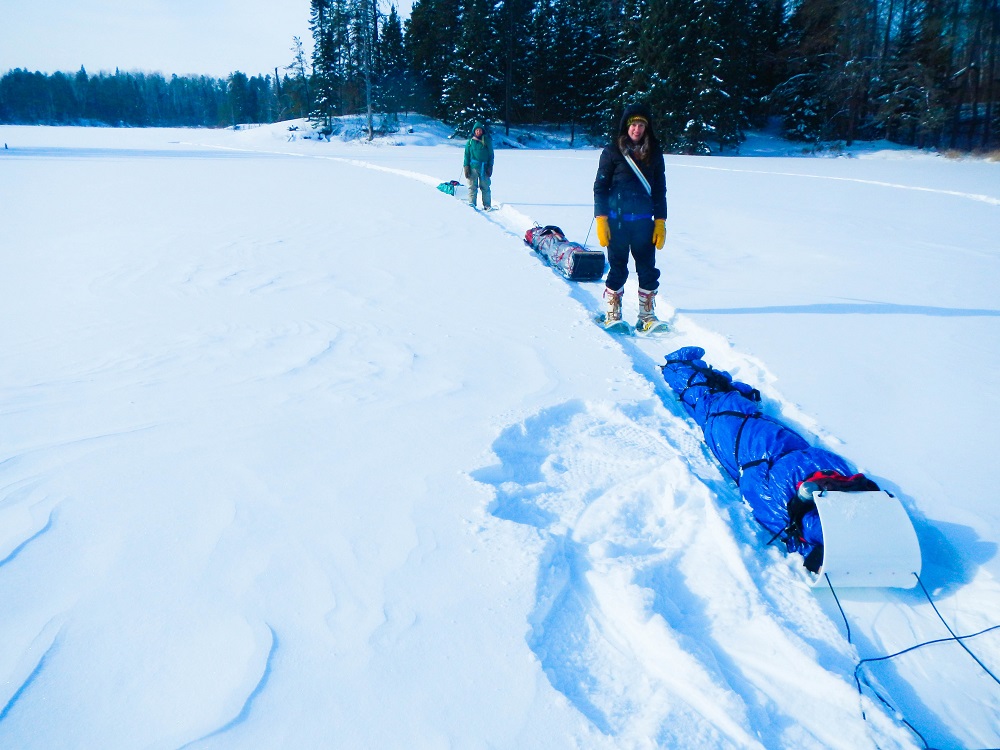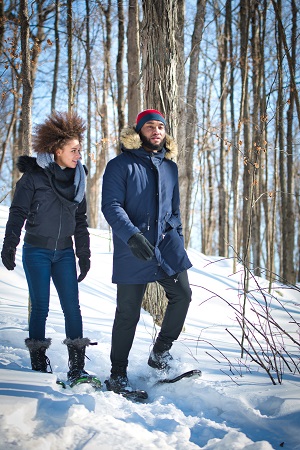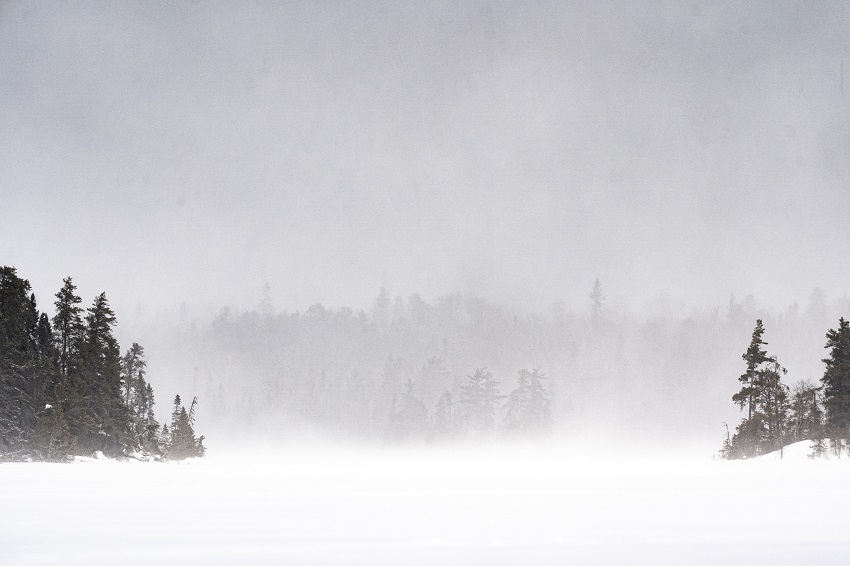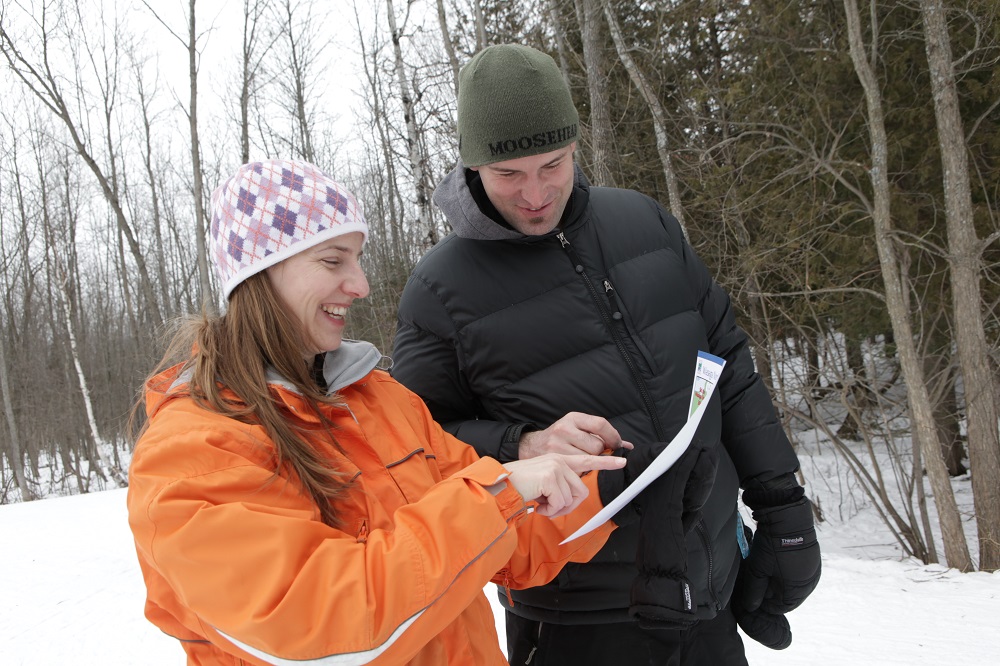If you’re a summer camping enthusiast, you may be keen to put your skills to the test in a different season. Winter in our parks is a beautiful time. It’s quiet and still. The air is clean. And everything is covered in fresh snow.
Here are some tips for a fun and safe winter camping experience.
Types of winter camping
There are three options for winter camping: “cold camping,” “hot tenting,” or building a “quinzhee” (a.k.a., a snow shelter).
We’ll mainly discuss cold camping as it’s the most accessible method.
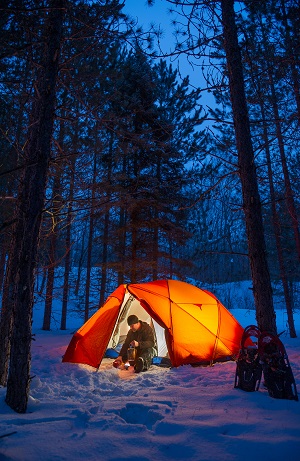
Cold camping means there is no heat source in your tent. With the right equipment, you won’t actually be cold!
A four-season tent for cold camping has less screening in it than a summer-weight tent.
Hot tenting involves a specially designed tent and wood stove. It is by far the most comfortable method because you can warm up your tent and dry out your gear, but it can be pricey to start out.
Building a quinzhee gives you a nice insulated place to sleep, but it takes a long time and there are some tricks you need to learn first. Plus, some people don’t like enclosed spaces.
Be prepared and know your skill level
Camping in winter is much more challenging than in the summer, so it’s best to go with one or more people who are experienced.
The trick to winter camping is to stay dry and never sweat.
Not only do you need the right equipment, you’ll need to keep your wits about you so that you’re warm, dry, and comfortable instead of cold, wet, and miserable.
Hypothermia is a real risk and can be deadly.
A good place to start is your own backyard or balcony. Set up your tent and spend the night outside to test if your sleeping bag and sleeping mattress are warm enough. Leave your stove outside overnight to see how well it works under freezing conditions.
Next, try camping at one of the provincial parks that is open to car camping during the winter.
You can practice your skills and test your equipment with the safety of your vehicle as a warm-up shelter if something goes wrong.
You can also take a winter camping workshop to learn the basics, including trip planning, equipment details, and safety.
Workshops are offered by some of the parks, including Frontenac Provincial Park, which also features an overnight outing to let you practice the skills you learned at the workshop.
Pack the right equipment
Ready to go cold camping? You’ll need (at minimum):
- a four-season tent
- a sleeping bag (rated to at least -15°C)
- a mattress or pad (remember: this is what protects you from the frozen ground)
- a cook stove
- a first aid kit
Make sure they’re all in working order before you leave home.
Some stoves don’t work well at cold temperatures, test yours at home to see if there are any issues. Never use your cook stove inside your tent (carbon monoxide kills!).
You’ll also need a waterproof backpack to hold your:
- food
- cooking utensils
- plastic mug
- spoon and bowl
- toiletries
- headlamp or flashlight and batteries
- pocket knife
- matches and candle
- clothes
Staying dry is key to staying warm, so take clothes you can put on in layers. You’ll need a good base layer (long john bottom and top). While synthetics are good, most experienced winter campers end up using merino wool because it’s soft, warm, keeps you dry, and doesn’t absorb odours.
You’ll also need good wool socks and insulating layers of different thicknesses for different activity levels (think tights, fleece jackets or sweaters, and a down coat).
Most importantly, bring a waterproof and windproof outer shell layer to protect yourself from the elements.
If you’re snowshoeing or cross-country skiing, you’ll generate a lot of heat and be able to shed layers. If you’re sitting around a campfire at night, you’ll want insulated snow pants and a winter coat.
Cotton is definitely a no-no in winter. Wet cotton will suck the heat right out of you and can lead to hypothermia. Don’t forget your toque and a couple sets of dry gloves!
Be prepared for short days and long nights. You’ll want to be set up at your campsite long before dark.
If you’re having a campfire, you likely don’t want your brand-new coat and snow pants to get a bunch of spark holes. Bring an old pair for sitting around the fire.

Be careful when drying or thawing out gloves and gear around the fire. All winter campers have stories of the great gear that they accidentally burned or melted by the fire.
Keep your gear contained. Nothing like a dump of snow to hide all the stuff you left strewn across your campsite. That’s a game of hide-and-seek you don’t want to play.
An insulated pad or blanket will make your lawn chair a lot more comfortable.
Plan your trip
Not all parks are open for winter camping; check our park locator or winter camping page to make sure your favourite park is winter-ready.
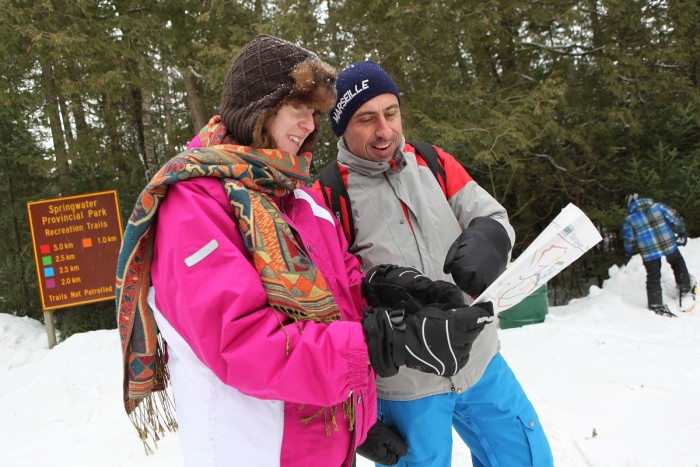
Check the weather. If it’s going to be 0ºC and rainy, don’t go. Winter camping is best when it’s below freezing and the snow is dry.
And again: know your skill level. Plan a trip that will be safe and well within your limits, especially if you’re new to winter camping.
Create your menu
You’ll be burning up the calories snowshoeing, cross-country skiing or hiking through snow-covered terrain, so it’s really important to bring hearty food you can reheat quickly.
Stews, soups, mac & cheese, pot stickers, and meat pies are all yummy choices. Bring snacks like granola bars, and pack plenty of hot chocolate!
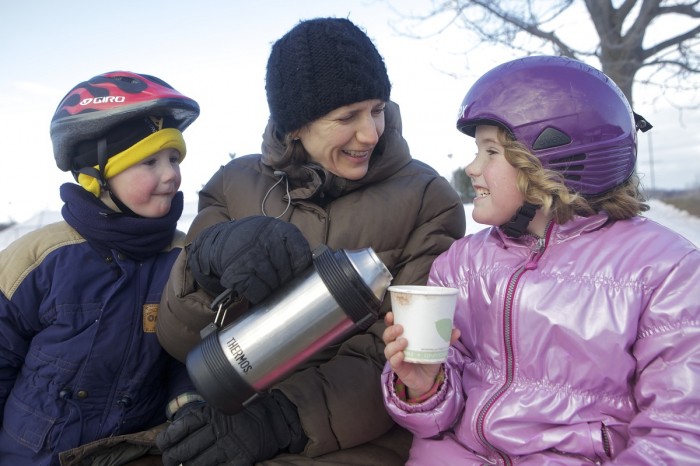
Don’t forget to stay hydrated. Check what water sources are available at your park.
Some parks may have running water at their winterized comfort station.
At other parks, you will need to melt snow over your stove or fire, and pour it into your (reusable) water bottle or thermos. Snow should be fresh and should boil for at least one minute prior to consumption.
When you arrive, register at the park office
Introduce yourself to the staff, and pick up your camping permits.

This is also a great time to get insider info about which trails/rinks are open, where to spot winter wildlife, and whether any winter programs are running.
Play it smart
Arrive in plenty of time to find your site and get set up while it’s still light.
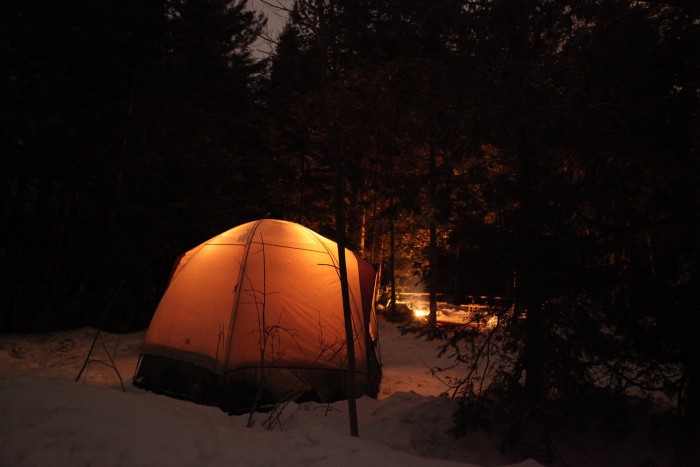
During your stay
Put the clothes you’re going to wear the next day in your sleeping bag with you and get dressed under the covers.
When you set out in the morning, make sure you’ve got a detailed map of the park, a first aid kit, waterproof matches, extra sweater, wind-proof outer shell, mitts, hats, socks, flashlight, liquids and high-energy snacks.
Don’t forget your phone and your trail map! The cold zaps batteries more quickly.
You don’t want to get stuck without a map in the middle of your hike or snowshoe, so always bring a physical map if you’re setting off into a less accessible part of the park.
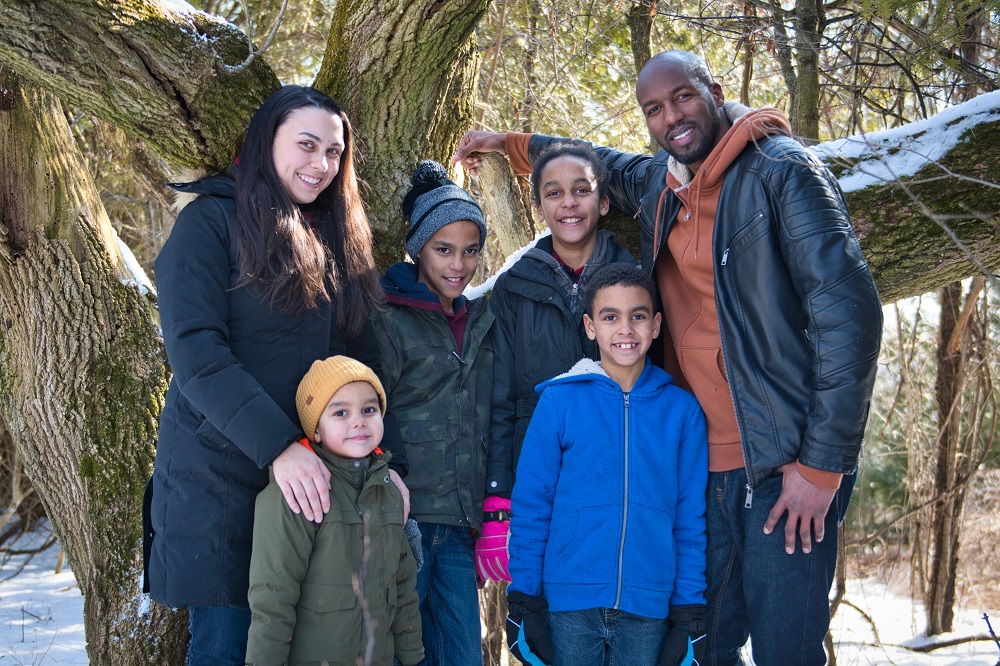
Enjoy a few days of peace and adventure in one of our beautiful winter parks.
Let park staff – and your friend or family member — know you’re heading for home.
Do an equipment check when you get home
Make sure everything is dry and in working order before you put it away, so it will be ready to go on your next adventure!
Ready for the challenge? Get out and enjoy one of our parks this winter!
Not sure you’re ready for winter camping? Try a winter glamping trip in a yurt or cabin, or plan a few fun day trips!
